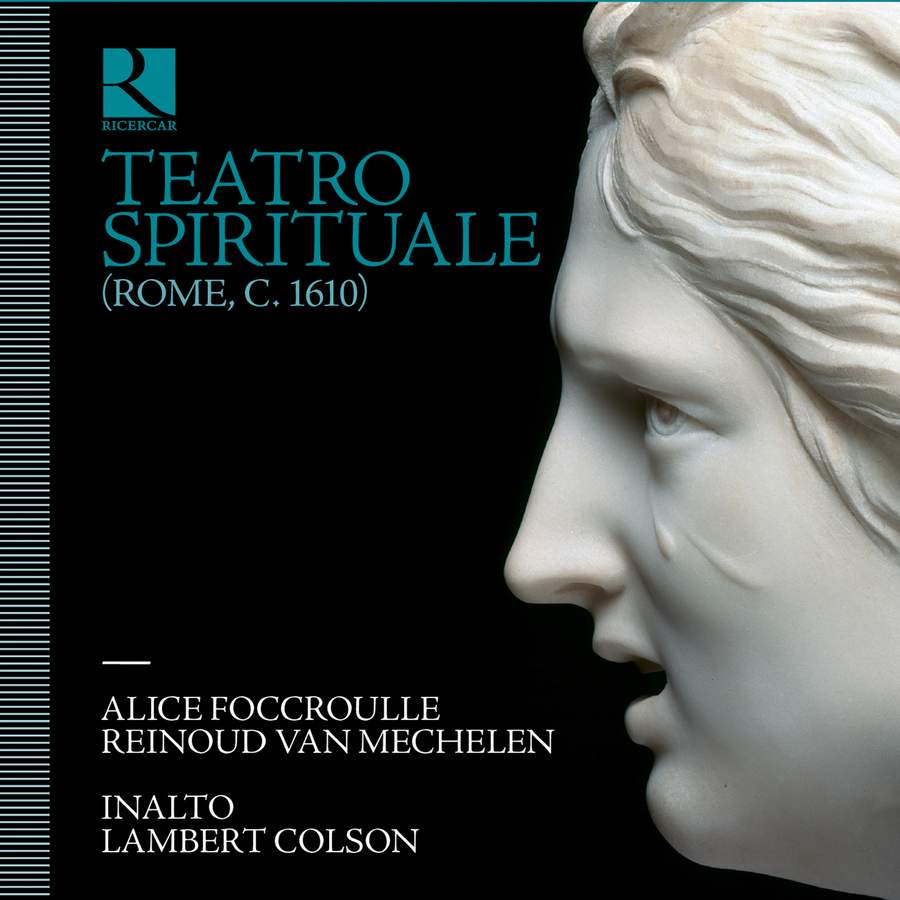Teatro Spirituale
Penitential music in the Chiesa Nuova, Rome c1610
Alice Foccroulle, Reinoud van Mechelen
InAlto, Lambert Colson
Ricercar RIC399. 72’15
This is one of the finest recordings I have heard in a while. Beautifully planned and performed, with singing and instrumental playing of the highest quality combined with exemplary recording quality. It reveals an intriguing insight into the musical activities of the Chiesa Nuova Oratory Church of St Philip Neri in Rome, the location of the premiere of the first known spiritual opera, Cavalieri’s La Rappresentatione di Anima e di Corpo.
The library of the Chiesa Nuova Oratory includes an anonymous early 17th- century manuscript containing a cycle of anonymous settings of the seven Penitential Psalms. This recording includes five of those Psalms set within an imagined Holy Week musical ritual in the Oratory with vocal and instrumental music from a wide range of composers, including Anerio, Cavalieri, Frescobaldi, de Macque, Marenzio, and Quagliati.
The five Psalm settings and two organ solos were recorded in the Chiesa di San Francesco in Trevi, south of Assisi, Umbria, now a cultural centre and museum, but retaining its original magnificent 1509 Renaissance organ. The organ was built for San Francesco by Paolo di Montefalco and remains in its original position on a side wall of the church. It is the first sound we hear in the recording, introducing the delightfully pure and clear tone of the outstanding soprano Alice Foccroulle in the first Psalm setting.

The following track is, appropriately, the instrumental Sinfonia from Cavalieri’s La Rappresentatione di Anima e di Corpo. It was recorded about 1,300 km away in the church of Saint-Apollinaire, Bolland, in the eastern part of Belgium, the recording venue for all the pieces on the recording apart from the Psalms and two organ solos. The acoustic of the two remote venues match well, as does the pitch, clearly set by the pitch of the Trevi organ at A=445Hz.
The second Psalm is sung by the impressive tenor, Reinoud van Mechelen. He and Alice Foccroulle share the Psalms, and are joined by three other singers in some of the spiritual songs. The ten instrumentalists play on four sackbuts and cornett & mute cornett, with continuo support from two lirones, theorbo, archlute, organ and harpsichord. The continuo accompaniments and instrumental pieces are well-judged by director Lambert Colson and the individual players. In the Psalm settings, the continuo accompaniments are aurally ‘colour-coded’ with the organ and theorbo support the passages that are directly addressed to God, while the more retrospective sections are accompanied by harpsichord, lirone and theorbo. A neat idea that works well,
There are two solos played with an excellent feel for Italian early 17th-century musical thinking by Marc Meisel on the Trevi organ: the rather anarchic multi-sectional Cappriccio sopra Ré, Fa, Mi, Sol by Giovanni de Macque and Frescobaldi’s exquisite Toccata quarta per l’organo da sonarsi alla elevation from his 1627 Secondo libro di toccate. His Canzon quinta a 4 is one of the four instrumental pieces played on the four sackbuts and cornett, the others being Luca Marenzio’s madrigal Crudele, acerba, inesorabil more and the concluding Recercata 19 a 4 by Paolo Quagliati.
Despite the rather sombre setting of a Holy Week background, the music ranges widely in character and mood, revealing some of the musical wealth of the Chiesa Nuova Oratory and, indeed, the extraordinarily rich tapestry of musical development in early 17th-century Rome.
More information, and a link to the CD booklet, can be found here.

